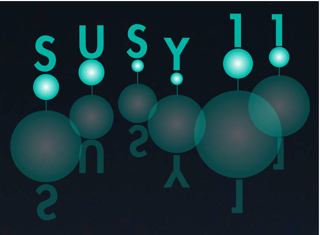Speaker
Mr
Fabian Ruehle
(BCTP and PI, Bonn University)
Description
t is an ongoing effort in string phenomenology to construct MSSM-like string models. Heterotic string theory has proven especially useful in this context. The problem in constructing such models is that the geometry of the compactification spaces is very involved. In addition, in heterotic string theory, gauge bundles have to be constructed which lead to the Standard Model gauge groups in the low energy effective theory. In order to obtain consistent models, very strong and complicated consistency conditions have to be satisfied. However, as it turns out, heterotic string compactifications can be described conveniently and naturally in the language of a 2D supersymmetric theory with U(1) gauge groups on the string worldsheet. Such models are called Gauged Linear Sigma Models (GLSMs). We find that in these models one can allow for Fayet-Iliopoulos (FI)-terms, which can be interpreted as Kahler parameters and axions on the target space geometry. We show that field dependent non-gauge invariant FI-terms lead to a Green-Schwarz-like mechanism on the worldsheet. This mechanism can be used to cancel worldsheet anomalies and thus the stringent consistency requirements are relaxed. However, as the FI-terms are constrained by quantization conditions due to worldsheet gauge instantons, the anomaly conditions turn out to be still constraining. When the FI-terms involve logarithmic terms, the GLSM seems to describe the heterotic string in the presence of non-perturbative objects, so-called Neveu-Schwarz (NS) 5 branes. We discuss how these NS5 branes backreact on the target space geometry. There is evidence that in the presence of anti-NS5 branes supersymmetry is broken and in addition the compactification space is decompactified.
